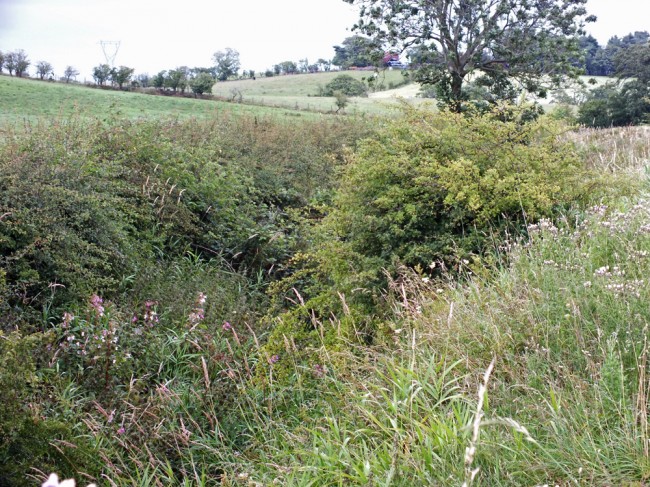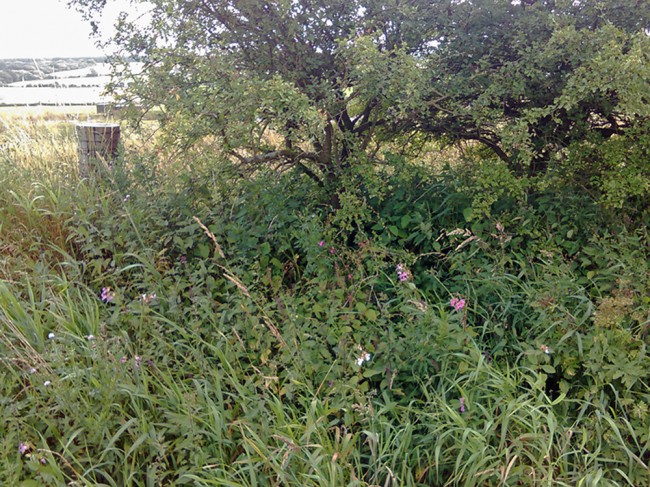Whilst following the Coyle upstream, we eventually arrived at the Kerse Burn where we discovered a relatively new infestation of Himalayan balsam, The plant densities found indicate that this outbreak is relatively new, possibly in it’s second or third year. We haven’t yet worked out the length of river affected but in reality it could include the entire Coyle and Ayr downstream of the confluence but this is unlikely. The outbreak is approximately 32.5 km from the harbour so it is essential to take this in hand now. Without immediate action, I’d expect the plant to spread downstream rapidly in the next two years and possibly go beyond the realistic opportunity for control. Of all there invasive species, this is perhaps the fastest spreading and most difficult to eradicate although with persistence this may be achieved in just 2 – 3 years with determined action.

This is typical of what we found today. More plants clumped together than would be expected for the first year of an infestation but possibly in is second or third flowering season. Immediate control is required to avoid a population explosion.
I’ve informed Gordon who will immediately arrange a team of volunteers to tackle this outbreak and find the source. It is essential that we don’t miss this opportunity. This plant can quickly dominate and exclude native species leading to erosion and reduced water quality. The Ayr and the Coyle are already challenged on these issues so further reductions will only further impact on this and ultimately the habitat and fish. Bailiffs have already volunteered their assistance and we are very grateful for this offer.
Two years ago ART staff found 3 plants in the Craigie area and removed them. There has been no further outbreaks in this area. Last year we found a single plant near Mauchline and again removed it before it spread its seed. The Ayr catchment until this year was thought to be the only Ayrshire river without an established population. We can no longer say that but hopefully in three years time we will again be able to. Anglers should keep an eye out for the plant and please report any sightings to the Trust so that we may deal with it. Better still uproot it and hang it up on a tree or fence to air dry and die…. then let us know.


